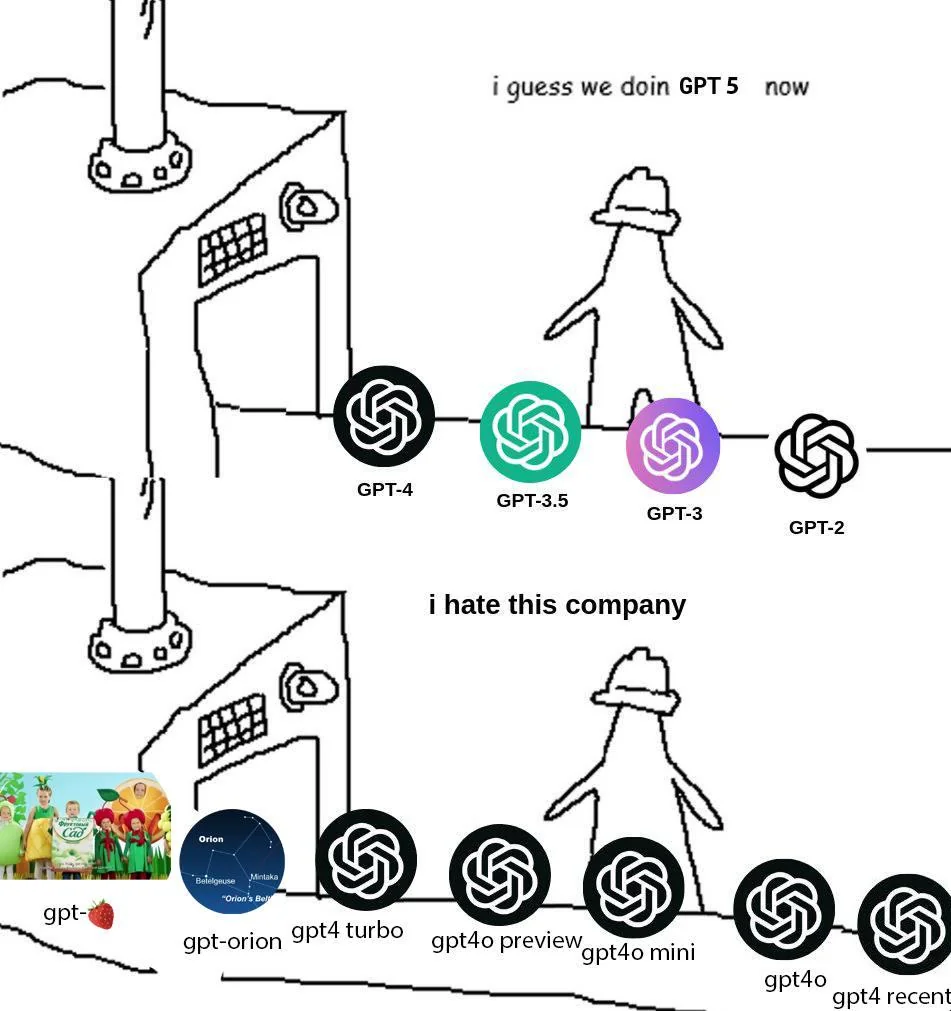
an AI image not created by gpt-4o
What do you fear? I dont know, but I do know what OpenAI fears—you.
On May 13th, 2024, OpenAI was expected to release GPT-5, following up on their GPT-4 release on March 14, 2023. But instead of advancing with a clear numerical step forward, they released GPT-4o. Why?
The answer isn’t competition from Anthropic, Google, or new rival DeepSeek. It’s not a lack of technical progress—the model was groundbreaking. And it’s certainly not a timing issue—over a year had passed since GPT-4. Instead, the decision was driven by fear. Not fear of regulators or existential AI risks, but fear of public perception—fear of what you think of them. Fear that investors, the tech elite, and the public might doubt OpenAI’s leadership, fracturing its carefully crafted image of AI supremacy.
The Cost of Fear
God commands us to “fear not” 365 times in the Bible—once for each day of the year. Why? Because fear is the mind-killer. It turns you into a coward, making you justify weak and wrong thoughts that serve neither you, nor others, nor even your true beliefs. Your mind rationalizes these compromises until they become “new” goals. And when you “achieve” these false goals, you feel hollow, filled with regret, having lost who you could have been because you forsook who you truly were and what you truly wanted.
Fear erodes the self. It devours who you are and who you could be. No person and no institution is immune.
And OpenAI, by fearing public perception, compromised its own vision. They hesitated, and hesitation breeds weakness.
OpenAI’s Fear in Action
Instead of boldly releasing GPT-5, OpenAI hesitated.
They had already introduced updates to GPT-4, specifically Vision (V) and Turbo. Adding an ‘o’ made it seem like the May 13, 2024 model was merely an iteration. Yet, their own statements contradicted this branding.
During the “Hello GPT-4o” unveiling, OpenAI stated:
“With GPT-4o, we trained a single new model end-to-end across text, vision, and audio, meaning that all inputs and outputs are processed by the same neural network. Because GPT-4o is our first model combining all of these modalities, we are still just scratching the surface of exploring what the model can do and its limitations.”
GPT-4o wasn’t just an iteration—it was a distinct, entirely new model. So why the misleading name? The result was needless confusion, especially for everyday users, whom OpenAI should be guiding toward clarity.
And since they didn’t release GPT-5 when they should have, it’s now been nearly two years since GPT-4. That gap has only fueled anticipation, raising the stakes even higher for GPT-5. Instead of resetting expectations with a clear version bump, OpenAI hesitated, trapping themselves in an increasingly convoluted naming scheme.
Now, with ‘o1’ released, why not call it R1—Reasoning 1? That would have been much clearer for a category-defining model. Maybe ‘o’ for ‘omni’ was part of their meta-narrative or a symbolic motif. Maybe it was an homage to OpenAI’s own initials. Either way, it was a mistake, compounded by the fact that its predecessor—still present in ChatGPT—already contained ‘o’ due to the earlier naming misstep. “What’s the difference between 4o and o1?” One has numbers before the ‘o,’ and the other has numbers after the ‘o.’
I saw a commenter try to explain OpenAI’s model lineup… it took him five paragraphs. Even OpenAI can’t do it simply—just look at the model picker in ChatGPT.
Imagine how easy it would be if we could say:
“For real-time conversation and video, as well as most everyday tasks, use GPT-5. For deep logic, research, coding, or STEM work, use R1. It’s slower and more expensive, so use it wisely.”
Instead, we have GPT-4o, GPT-4o with tasks, o1, o3-mini, o3-mini-high, GPT-4o mini, and GPT-4. Oh, and o1 Pro Mode. A mess.
Fear Breeds Hesitation, Hesitation Breeds Weakness
This hesitancy to name things clearly is a symptom of a larger problem—one that goes beyond branding and into OpenAI’s strategy itself.
That single act of fear—hesitating to name the May 2024 model GPT-5—triggered a cascade of hesitation. Each unclear decision compounded the problem. It’s not just a branding problem; it reflects a deeper issue of risk aversion.
OpenAI is battling competition, internal turmoil, and relentless external scrutiny. They carefully curates an image, but hesitation is leaking into their strategy and makes them vulnerable.
By avoiding full version increments, OpenAI constrained its ability to iterate publicly. Small, incremental improvements are the droplets that create big innovation waves. These droplets are now hidden, their impact muted. Engineers and researchers, whose work thrives on public discourse and depends on testing and validation, find themselves trapped under an artificial ceiling of expectations.
Shipping products—even imperfect ones—drives innovation and makes us stronger. Each release, whether a triumph or a misstep, shapes the path ahead.
By yielding to the fear of public judgment, OpenAI risks more than its reputation—it risks the very innovation it seeks to protect. In the race toward artificial general intelligence, sometimes the boldest move is simply showing your work, no matter how it’s perceived.
Fear is the real enemy. The lesson applies to them—and to us: fear comes from within. And if you conquer it, you win.
OpenAI’s True Strength
The team at OpenAI needs to realize—free from VC-driven and public-perception caution—that they are great. They don’t need to fear revealing their work or “secret sauce”—discoveries happen in parallel regardless. Calculus was discovered in two places. The truth is, God already made the math; we just find it. OpenAI’s success isn’t tied to a single algorithm or training method—it’s the people who build it.
Secrets don’t stay secret forever. The real competitive advantage isn’t a specific training style or dataset—it’s the team’s ingenuity, adaptability, and boldness. They need to embrace a positive++ mindset and overcome their fear. In doing so, they will strengthen their own culture, attract top talent, and boldly stay ahead.
And they seem to be doing just that. With the latest wave of releases, OpenAI appears to be shedding the hesitation that plagued them for a year.
The lesson is clear, for them and for us: fear comes from within; fear comes from you. And you—you can win.
P.S. - A Word on Naming the APIs
Our great ancestor, Adam, was the second name-giver, God being the first. Naming is part of our nature.
So, instead of a tangle of dashes and suffixes long enough to make Santa’s sleigh look short, go for something simpler like <name>-<two-digit-year><month>. Here are some examples:
- gpt5-2502
- o1-2502
- o3mini-2502
- o3-mini-25.02
- o3-mini-2502
- gpt5-mini-2502
- g5-mini-2502 👀
- u1-2503 👀
Clarity breeds confidence.
God Bless,
Daniel

I am completing dual Master of Science degrees in Mechanical and Aerospace Engineering while honing my drawing skills, learning French, and pursuing various side projects
Contact me: